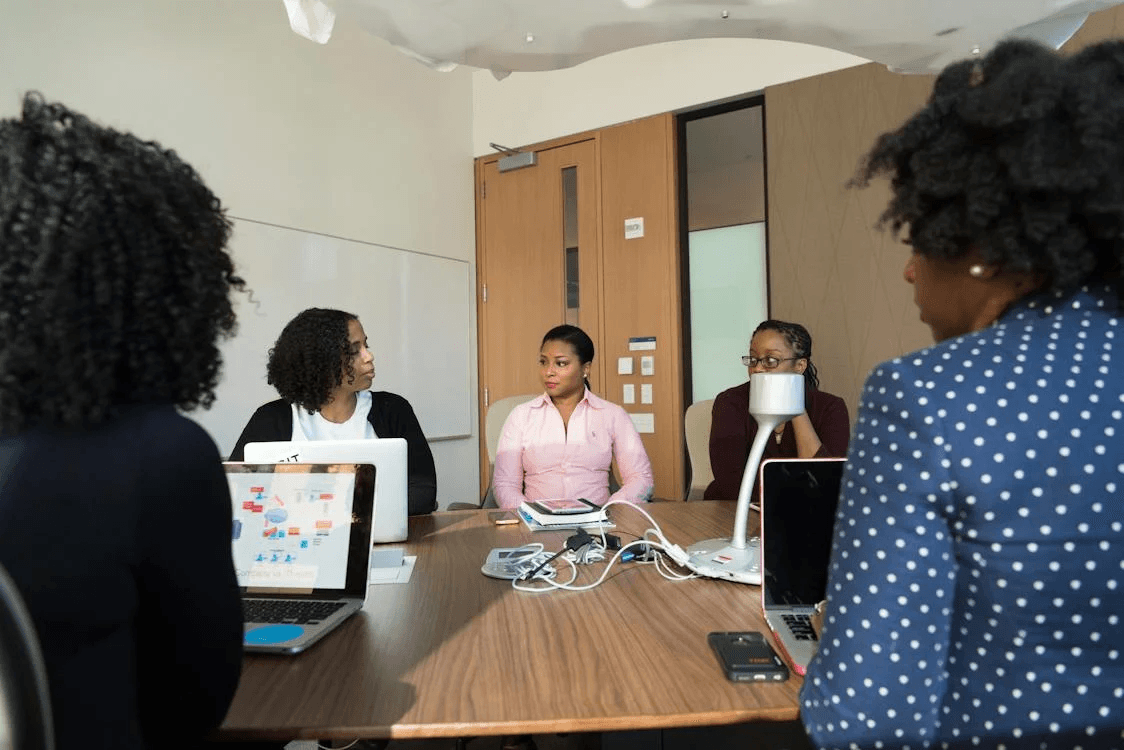Lead Generation
Increase Sales: Understanding What More Leads Really Means
Discover key strategies to convert more leads into loyal customers with our guide on crafting personalized messages, compelling emails, and engaging LinkedIn outreach tactics for effective communication.
Feb 26, 2024

Ever wondered what it feels like to have your inbox bursting with inquiries? That's the thrill of getting more leads! It's like being the most popular kid in school, only this time, it's your business that's getting all the attention.
But what does more leads really mean for you? It's not just about numbers; it's about opportunities knocking at your door. Imagine converting those leads into loyal customers. Sounds exciting, right?
Understanding Leads

Picture this: you're a fisherman, and leads are the fish you're seeking to catch. In the business ecosystem, leads are potential customers who've indicated interest in your product or service, much like fish nibbling on bait. But not all nibbles result in a catch, right? That's why it's crucial to understand the types of leads you're attracting.
Cold emailing and LinkedIn outreach are two popular methods to garner leads. Think of cold emailing as casting a wide net. You’re reaching out to potential customers who may not know your brand yet. It’s essential to be personable and avoid the no-reply address; you're introducing yourself, after all! With LinkedIn, imagine you're fishing with a spear — it’s targeted, and you're connecting within a professional network.
There’s a common mistake, however, in both strategies: sounding too robotic. People crave a human touch. Customize your messages, show genuine interest, and you’ll see the difference in response rates. Here's a tip: reference a potential lead’s recent work or accolades to make that personal connection.
Different techniques can boost your lead generation:
Content marketing, think of it as the shiny lure that attracts the fish.
Networking events are like fishing tournaments; you're surrounded by potential catches.
Referral programs incentivize current customers to bring in more fish, like a ‘fish finder’ for your business.
Each method has its time and place. Content marketing works well online, networking is great in-person, and referral programs can constantly run in the background. Think about what suits your business style and the kind of fish, I mean leads, you're after.
Incorporating these practices takes consistency and patience. Start with a solid strategy:
Know your target audience.
Keep track of your outreach.
Engage with content that resonates.
Remember, you're not just fishing for any lead, you're looking for the ones that will grow your business. As you refine your techniques, you'll become more adept at spotting and landing the ideal customers for your brand. Keep fishing, and you'll see your net overflowing with quality leads eager to learn more about what you offer.
The Power of More Leads
Imagine you're a fisherman. Every lead you generate is like casting your line into the sea. The more lines you cast, the better your chances of catching fish—or in the world of business, landing a sale.
Cold emailing and LinkedIn outreach are akin to choosing the right fishing spots. They're tried and true methods, but there's a knack to doing them right. You wouldn't use cheese as bait in saltwater, right? Similarly, sending out generic, impersonal emails just won’t cut it. You've got to tailor your message; be the gourmet dinner enticing your lead away from a sea of spam.
Beware of the common mistake of overfishing—one too many emails and your leads may feel barraged. Strike a balance. Understand that timing is crucial. Imagine tapping on someone's shoulder in a noisy room; your outreach should be that timely nudge that turns heads.
Let's talk methods. Sometimes cold emailing can feel like shouting into the wind. You throw your message out there, but with no guarantee of a response. That's where techniques like A/B testing come into play. You send out two variations of your email to small groups and see which one gets more bites. Fishermen try different lures; you’re experimenting with subject lines and call-to-actions.
And what about LinkedIn? Think of it as the fancy fishing boat decked out with the latest gear. It provides a trove of information about your leads. Engage with their content, join groups they're active in, and when you reach out, keep it personal and relevant. It'll be like chatting over a fishfinder, expertly pinpointing where the fish are biting.
Incorporating these practices requires patience. Don't expect a trophy fish on your first outing. Cultivate relationships. Network. Nourish your leads with valuable insights and information. Recommend solutions to their specific challenges.
Remember, every lead has the potential to become a customer. Your goal is to be the guide that helps them navigate from interest to decision. With a varied tackle box of techniques and a strategic approach, you're setting yourself up for a successful day on the water. Keep an eye on the horizon, adjust your methods as needed, and watch as your net of leads grows wider and more bountiful.
Quality vs. Quantity
When it’s about snagging more leads, you're faced with the age-old conundrum: quality vs. quantity. Think of it like a garden—you can have a ton of seeds (leads), but if they don’t sprout (convert), what’s the point? On the flip side, a few high-quality seeds that grow into robust plants (clients) are worth their weight in gold.
Quality leads are those who show a genuine interest in your offering and are more likely to become paying customers. Quantity, meanwhile, refers to getting as many leads as possible, regardless of their likelihood to convert. It’s tempting to think more is better, but that's not always the case. Ever been to a network event and exchanged cards with everyone only to realize you remember nothing about them? That's what chasing sheer numbers can feel like.
Here are a few common mistakes:
Casting a wide net without targeting – Just like you can't attract a specific fish using the wrong bait, you won’t rope in relevant leads with generic messages.
Overlooking the nurture process – Leads are not just numbers; they need personal attention and relevant information.
Focusing solely on numbers – High numbers can give a false sense of success; what really counts is how many are ripe for conversion.
Here's what works:
Tailoring outreach messages – Like a tailor fitting a suit, customize your communication to resonate with the recipient's needs.
Timing your outreach – It's like watering plants; too much and you'll flood them, too little and they wilt.
Staying patient and consistent – Much like farming, you can’t rush growth. Tend to your leads with care and attention until they’re ready for the next step.
Regarding techniques, A/B testing in cold emails can reveal what works and what doesn't, rather like testing which fertlizer helps a plant grow best. For LinkedIn, it's about engagement; talk to your connections as you would at a networking event, building a rapport over time.
By integrating these suggestions, remember that the sweet spot lies in balance – a harmony of quality and quantity leaps for splendid lead generation results. It’s about finding the right people and then talking to them in the right way at the right time. Channel your energy into nurturing these relationships, and watch as they ultimately help your client list bloom.
Expansion of Business Opportunities

When you generate more leads, you're essentially unlocking doors to new business opportunities. Think of it like fishing: the more lines you throw in the water, the better your chances of catching a fish. But it's not just about casting lines. You need the right bait and technique for the type of fish you're after. In business, this translates to tailoring your approach to the specific leads that'll benefit your business the most.
Avoiding the Scattergun Approach
A common mistake is to take a scattergun approach to lead generation. Picture a farmer scattering seeds aimlessly. Sure, some will sprout, but there's a lot of waste. You want to be more like a gardener who plants seeds in fertile ground with precision and care, nurturing them to yield the best results. Carefully select who you're reaching out to and make sure your message resonates with their needs.
Techniques for Improved Lead Generation
When it comes to techniques, start by refining your cold email strategy. Personalize each email - think of this as writing a letter to a friend who you haven't met yet. Social selling on LinkedIn is another big opportunity. Engage in actual conversations rather than just pitching; your profile should be a friendly face, not a billboard.
Personalize your approach
Engage in conversations
Use social proof
Incorporating Best Practices
As for incorporating these practices, let's say you're sending cold emails. Follow a structure that's been tested and proven:
Start with a compelling subject line.
Speak to the recipient's pain points and how you can solve them.
Include a clear call-to-action.
Remember, it's not enough to just use these techniques; you need to consistently optimize them based on the responses you get. Track what works and what doesn’t, continually finetuning your approach. And always put yourself in the shoes of your leads - if you wouldn't be excited by your email or LinkedIn message, why would they be?
By understanding and integrating these strategies into your regular routine, you're setting the stage for an increase in not just leads, but leads that hold real potential for your business growth.
Converting Leads into Customers
Imagine you're a farmer who's just harvested a bountiful crop. Those leads you've generated? They're your crop, brimming with potential, and now you're tasked with transforming them into something more substantial, like a farmer turns wheat into bread. Your end goal is simple: convert those ripe leads into loyal customers.
A common mistake is treating all leads with a one-size-fits-all approach. Just as every plant needs different care to grow, each lead requires a unique nurturing process. Personalization is key. You wouldn’t water a cactus with the same frequency as sunflowers, right? Similarly, you've got to tailor your communication to meet the specific needs and interests of each lead.
Take cold emails, for example. Let's say you're using them to initiate conversations. Now, picture throwing a dozen different fishing lines into a pond, hoping to catch a fish. You might, but will it be the right one? Instead, you should carefully choose the bait – the content of your emails – so you're more likely to hook the leads that will truly benefit from your offering. Here are a few tips to help you do just that:
Craft a Compelling Subject Line: Make it intriguing, like a mystery box they can't help but open.
Personalize Your Message: Use their name, reference specific pain points, and make it clear you've done your homework.
Offer Value: Give them a reason to continue the conversation. Perhaps a helpful insight or a solution to a common problem in their industry.
Call-to-Action: Be clear about what you want them to do next, whether it’s scheduling a call or downloading a guide.
When it comes to LinkedIn outreach, the approach is more like joining a banquet rather than casting lines. The platform is a bustling networking event, and here’s how you work the room:
Engage With Content: Like, comment, and share to get on their radar before you slide into their DMs.
Personalize Connection Requests: Mention a mutual interest or a recent post they made.
Keep Conversations Open-Ended: Ask questions that encourage dialogue and show genuine interest in their expertise.
Conclusion
You've got the strategies to turn more leads into loyal customers. Remember, it's all about personalization and effective communication. By crafting compelling subject lines and tailoring your messages, you're setting the stage for success. Whether it's cold emails or LinkedIn outreach, offering value and keeping conversations open-ended will help you stand out. So go ahead and apply these tips to your approach. Here's to converting those leads and growing your customer base!
Frequently Asked Questions
What is the main focus of the article?
The article focuses on converting leads into customers by using personalized communication strategies specifically in cold emails and LinkedIn outreach.
Why is personalization crucial in converting leads?
Personalization is crucial because it addresses the specific needs and interests of each lead, making the communication more relevant and increasing the likelihood of conversion.
How can subject lines impact lead conversion?
Crafting compelling subject lines is vital as they are the first impression and can significantly influence the open rates of cold emails, thus affecting lead conversion.
What should be included in messages to convert leads?
Messages should offer value, be personalized, and include clear call-to-actions to guide leads towards conversion.
How is LinkedIn used effectively for converting leads?
LinkedIn outreach should involve engaging with leads' content, personalizing connection requests, and keeping conversations open-ended to build relationships and convert leads.

